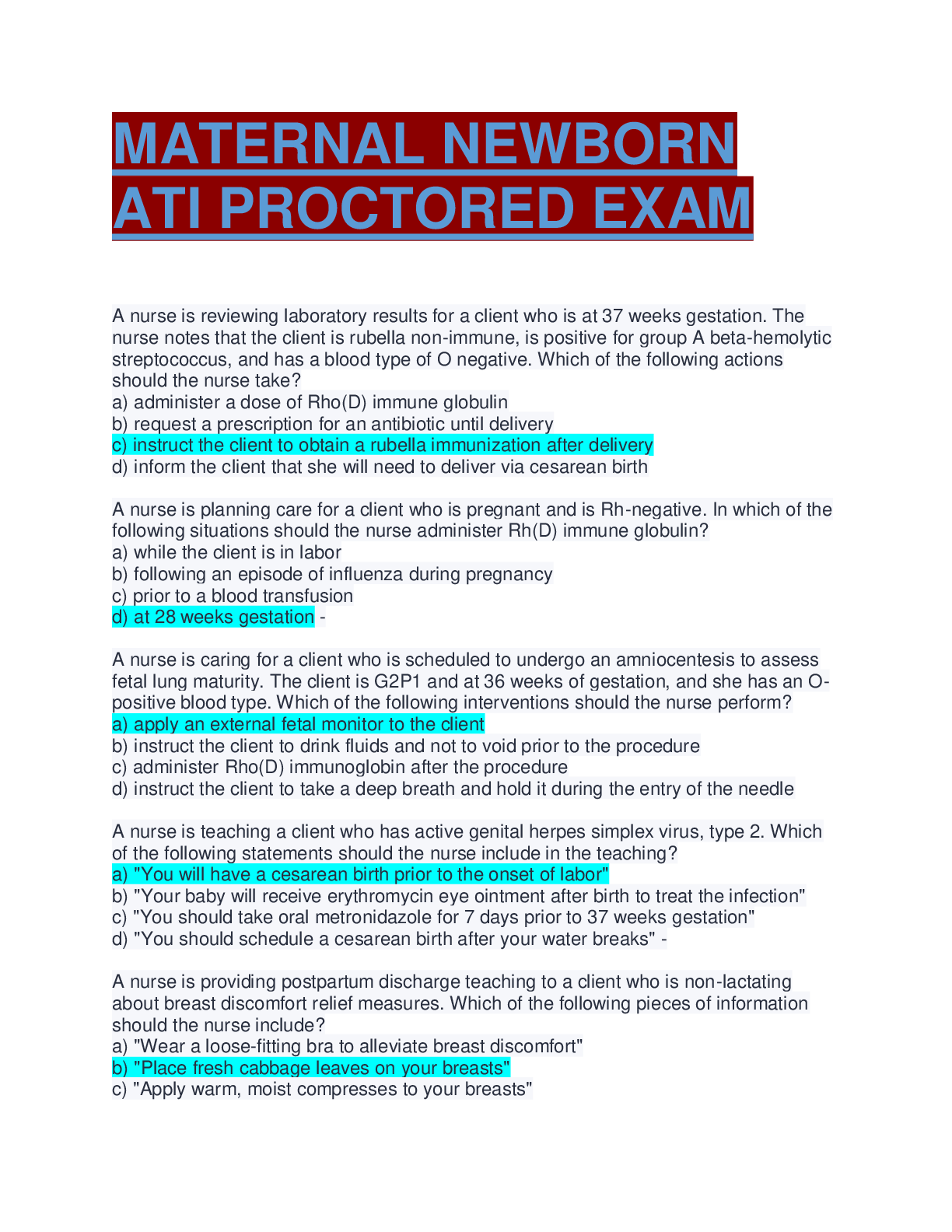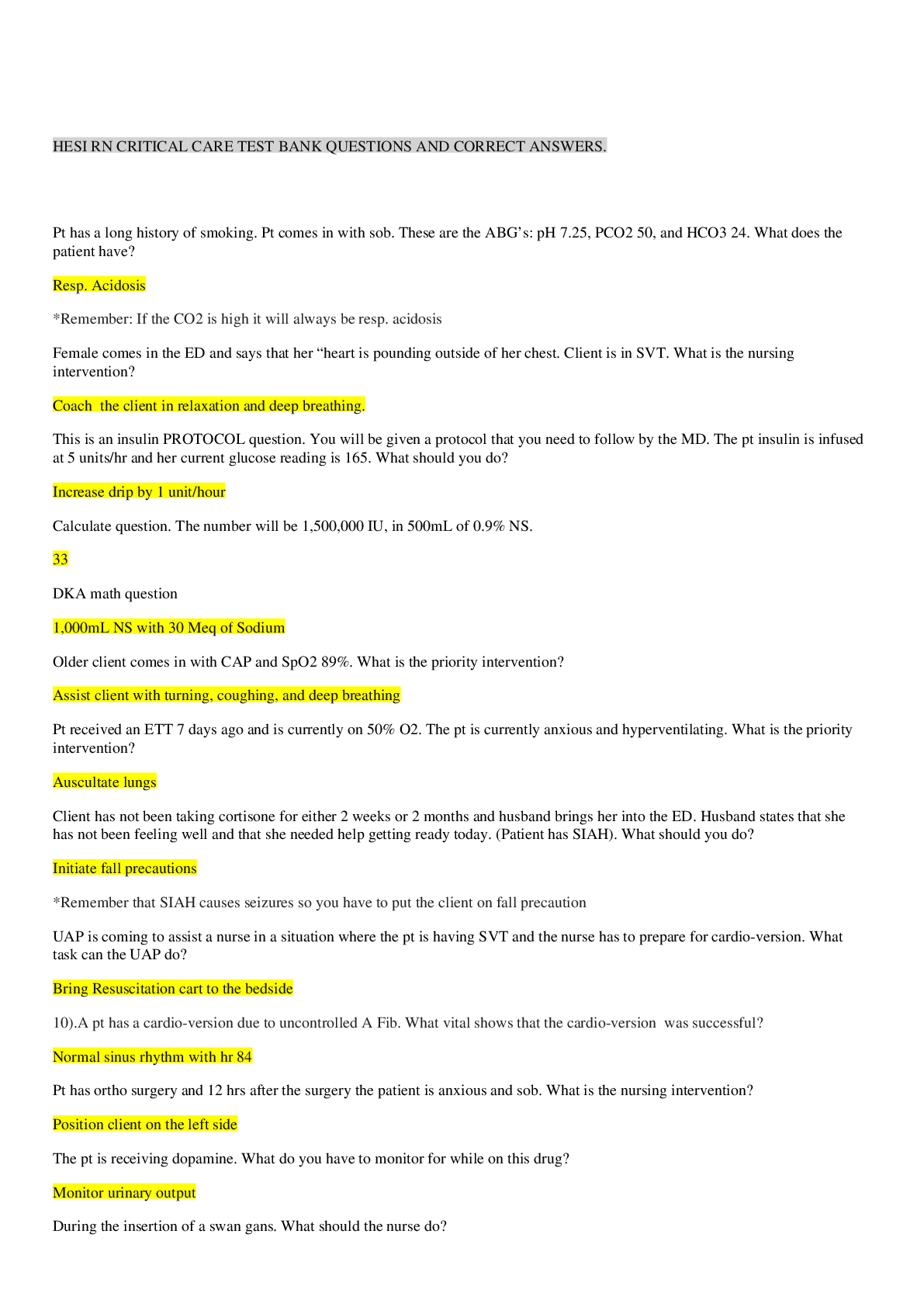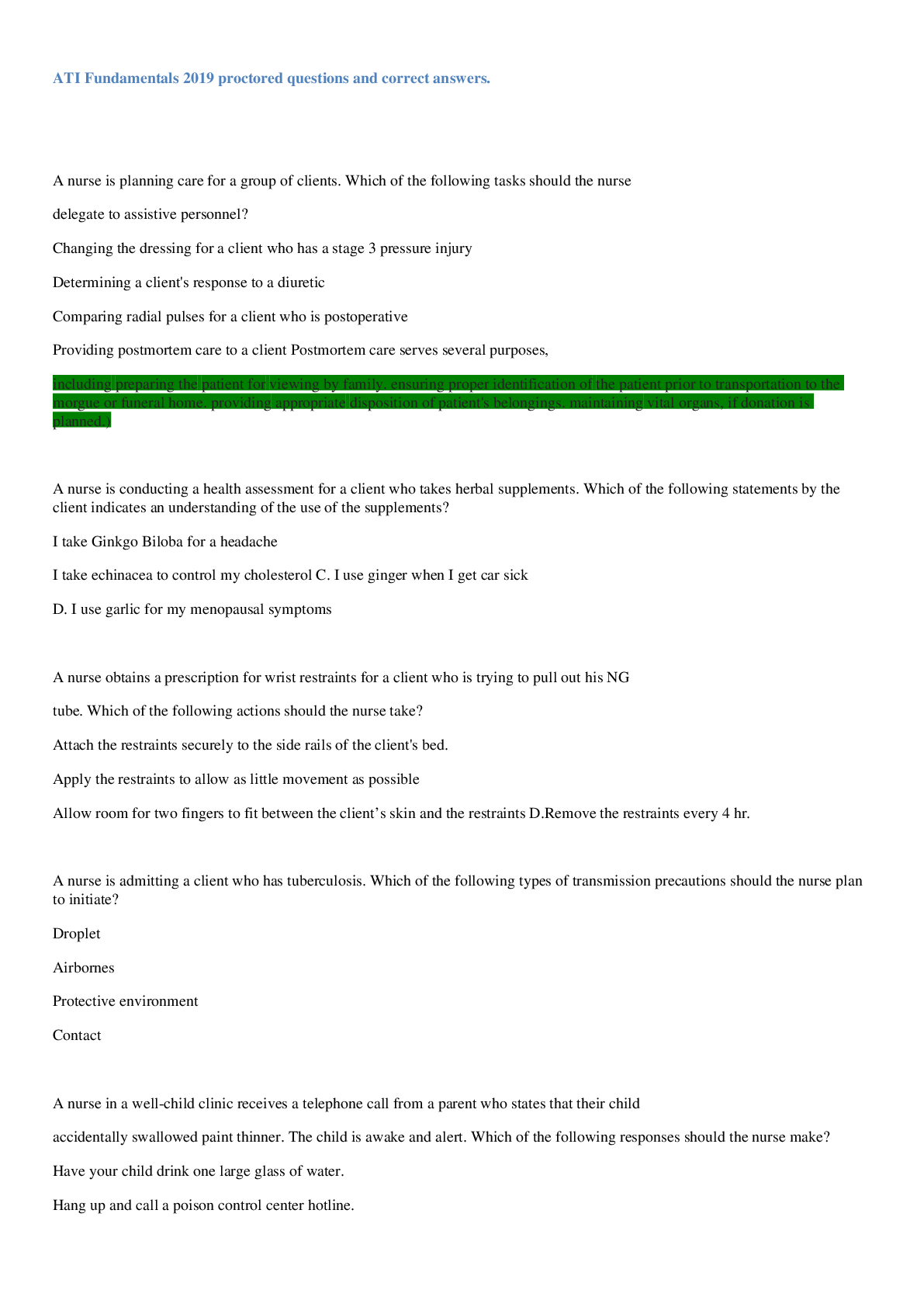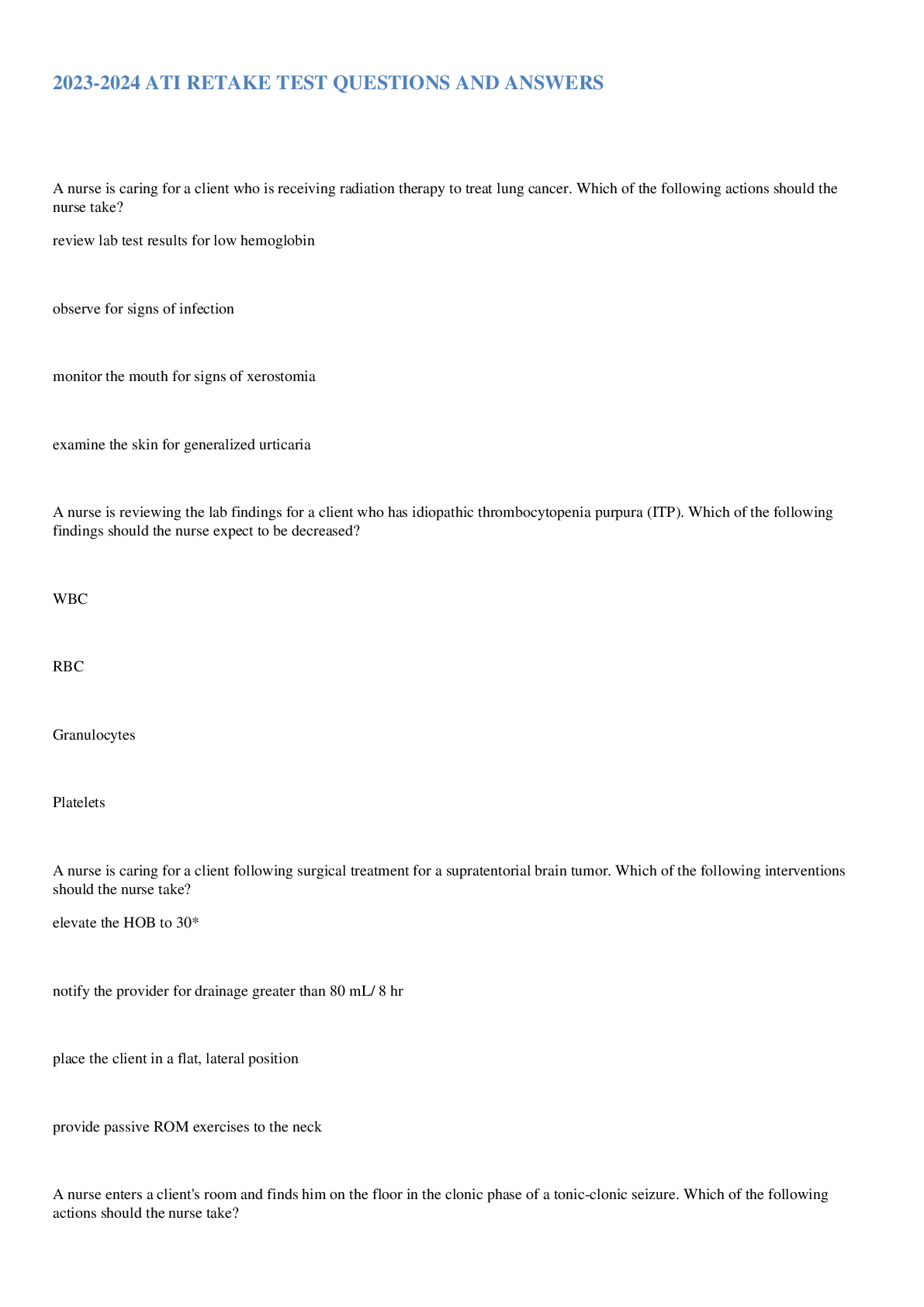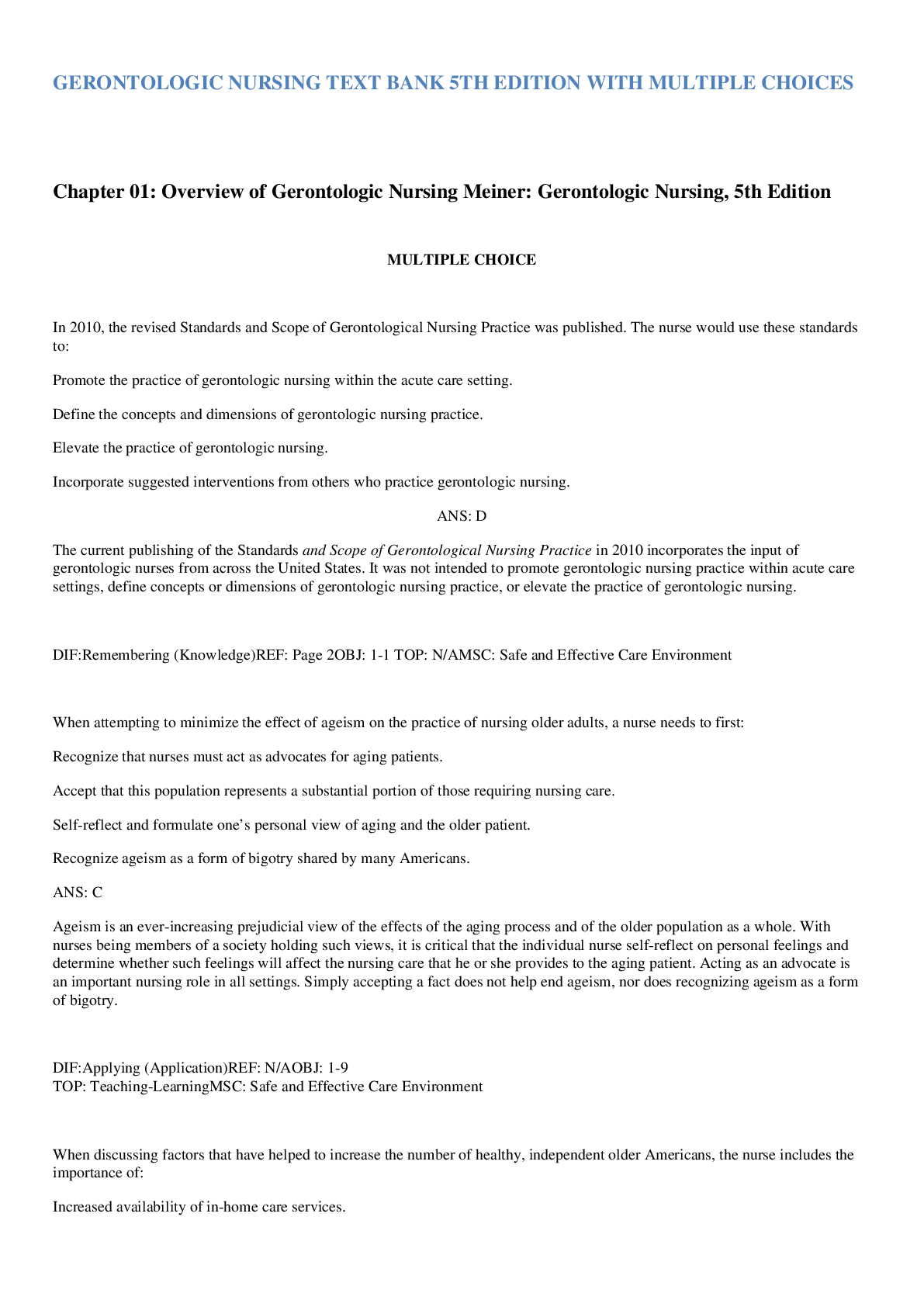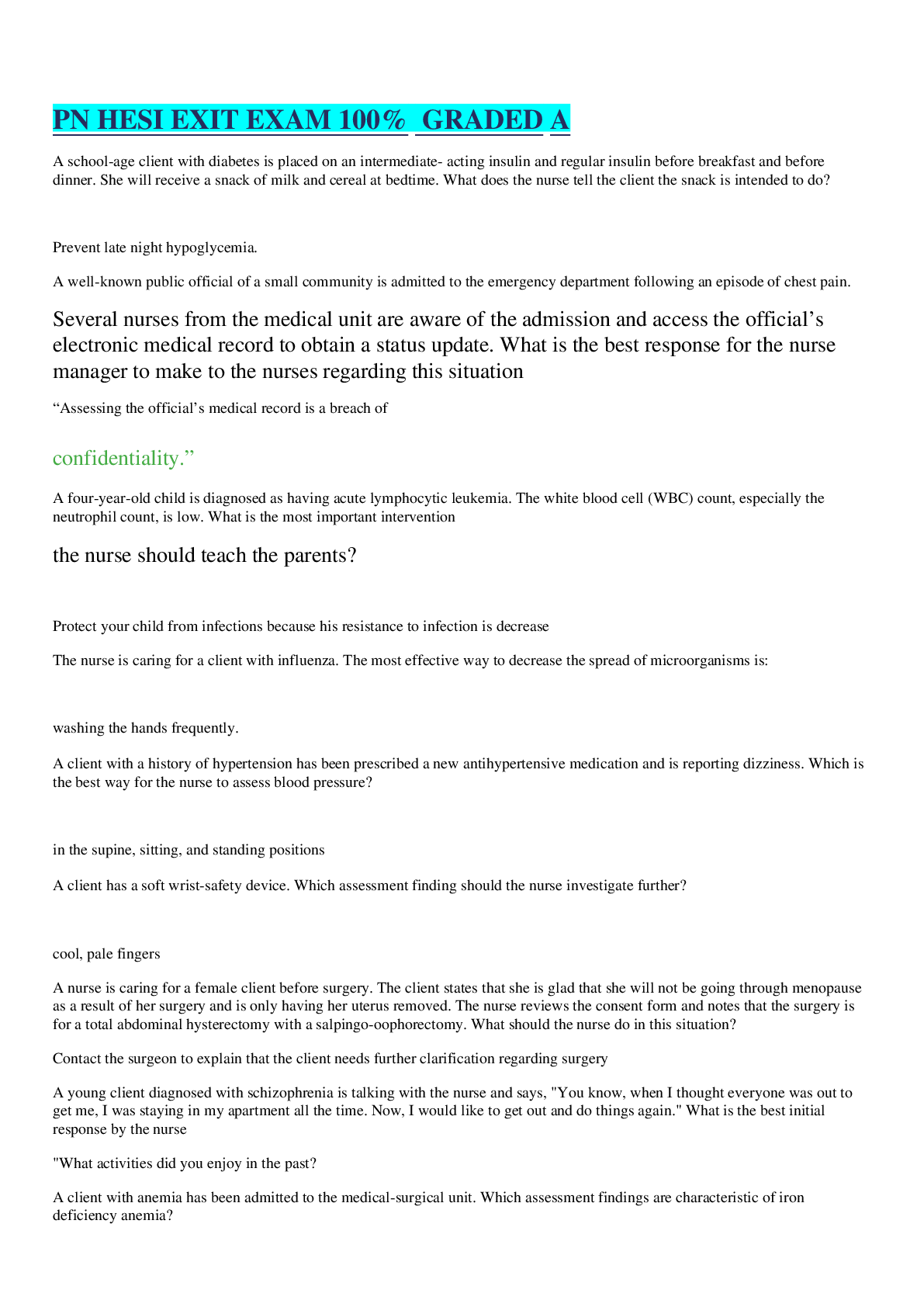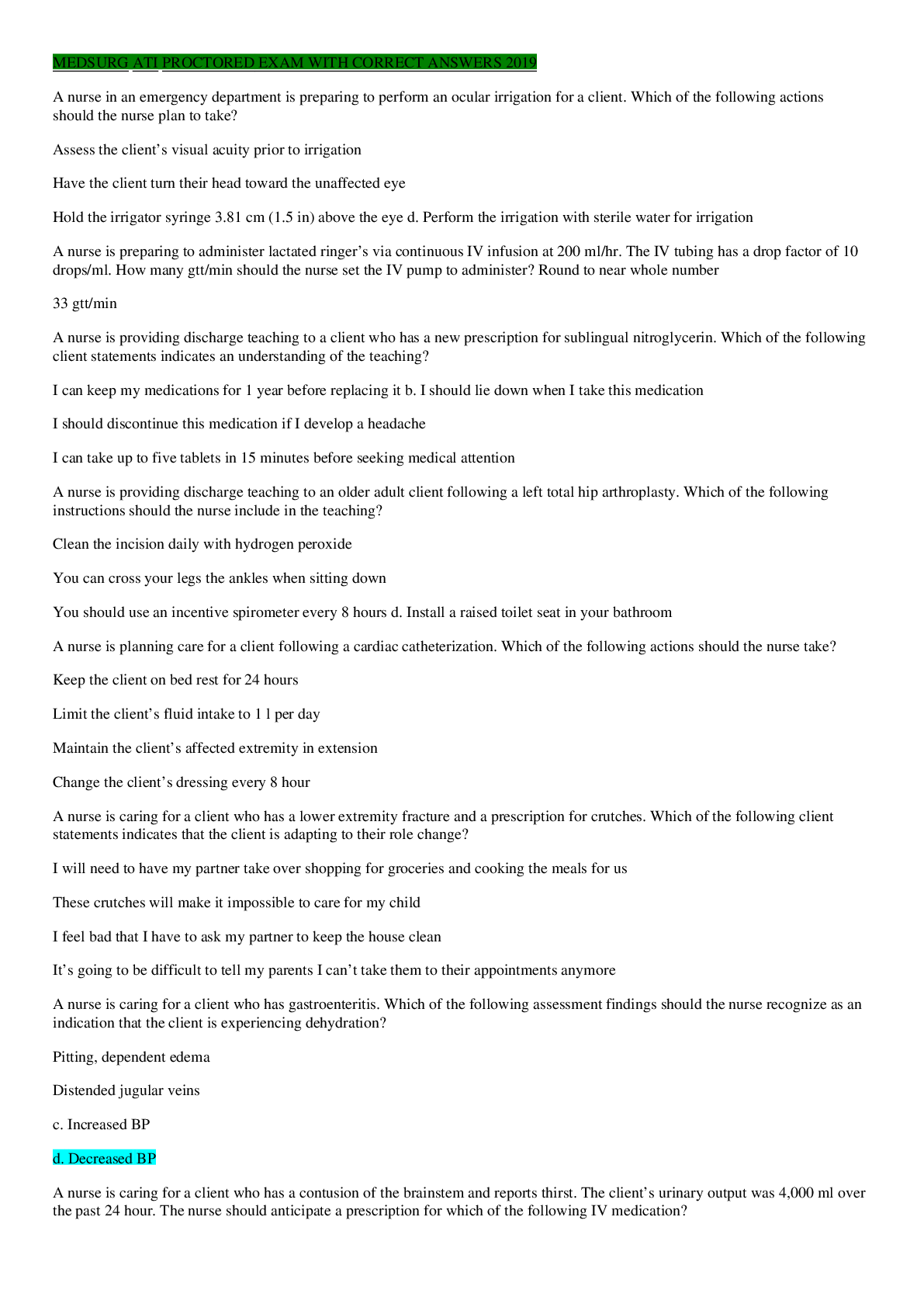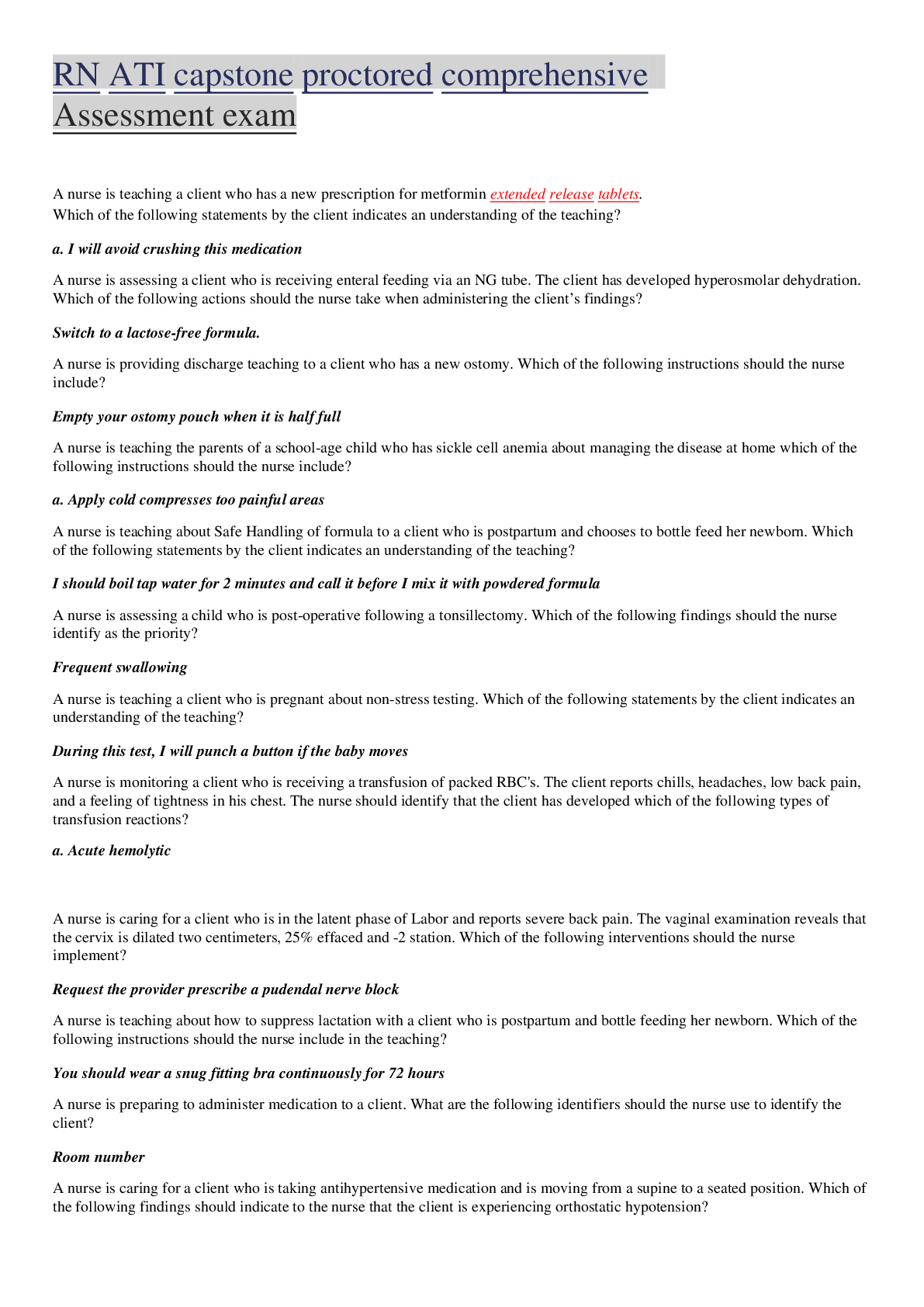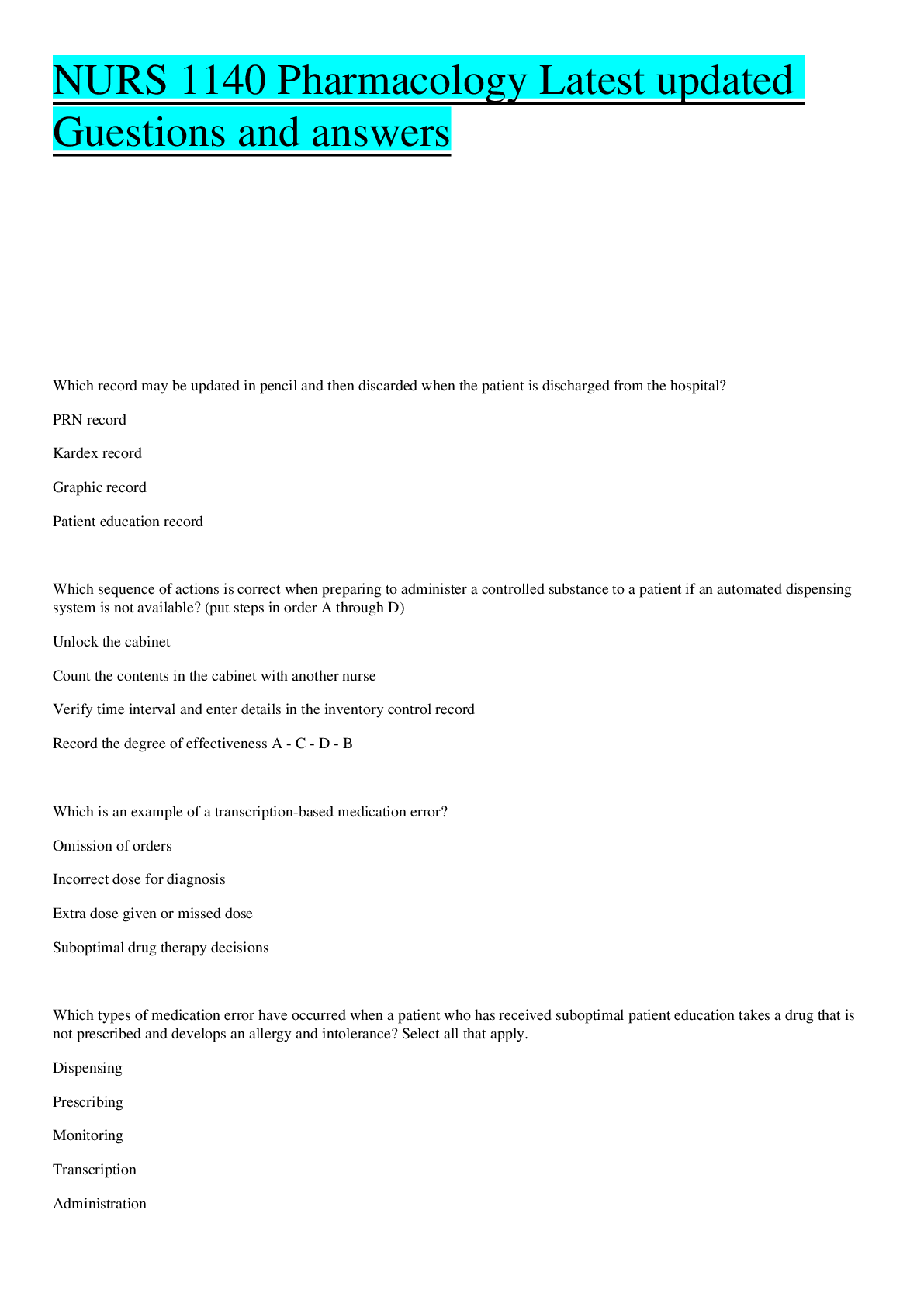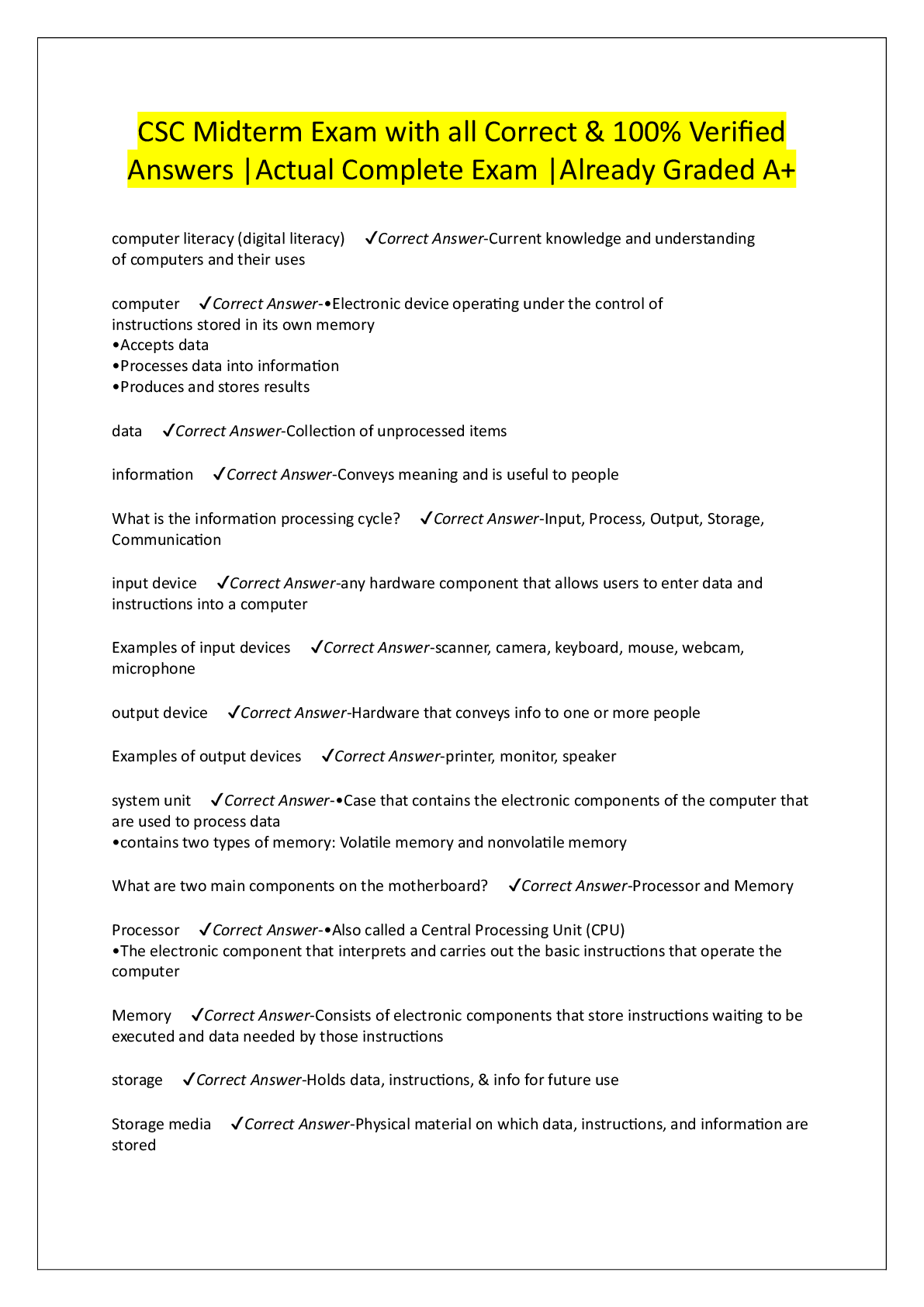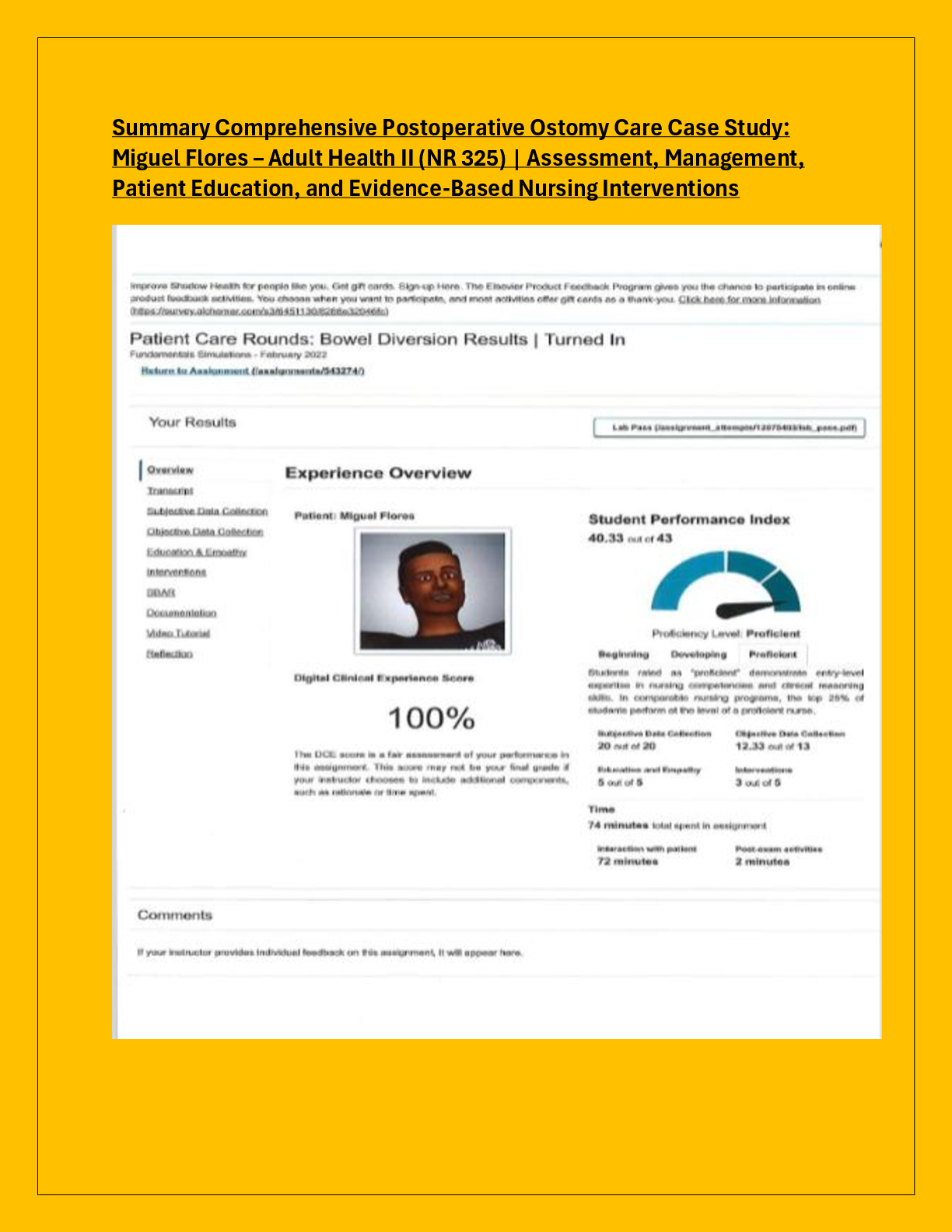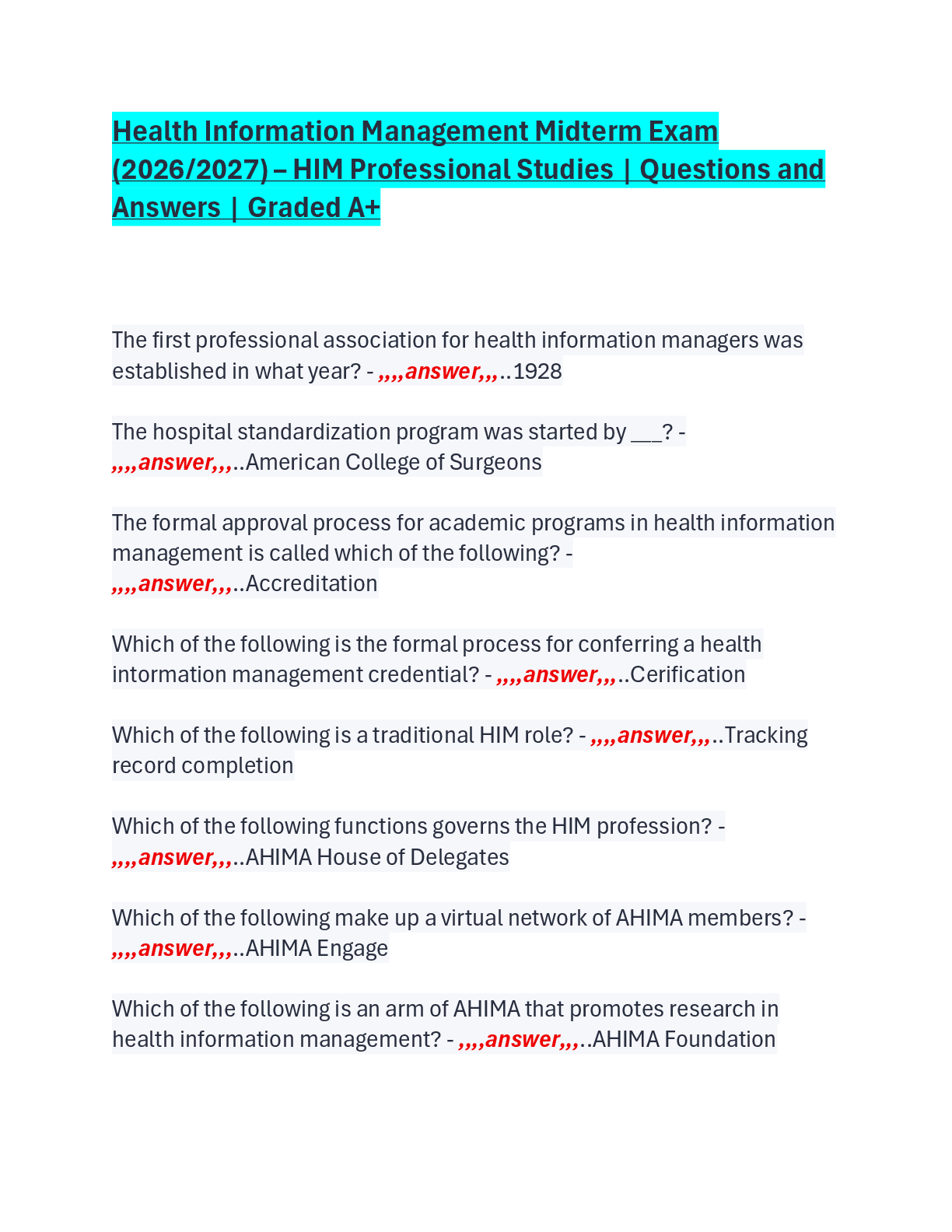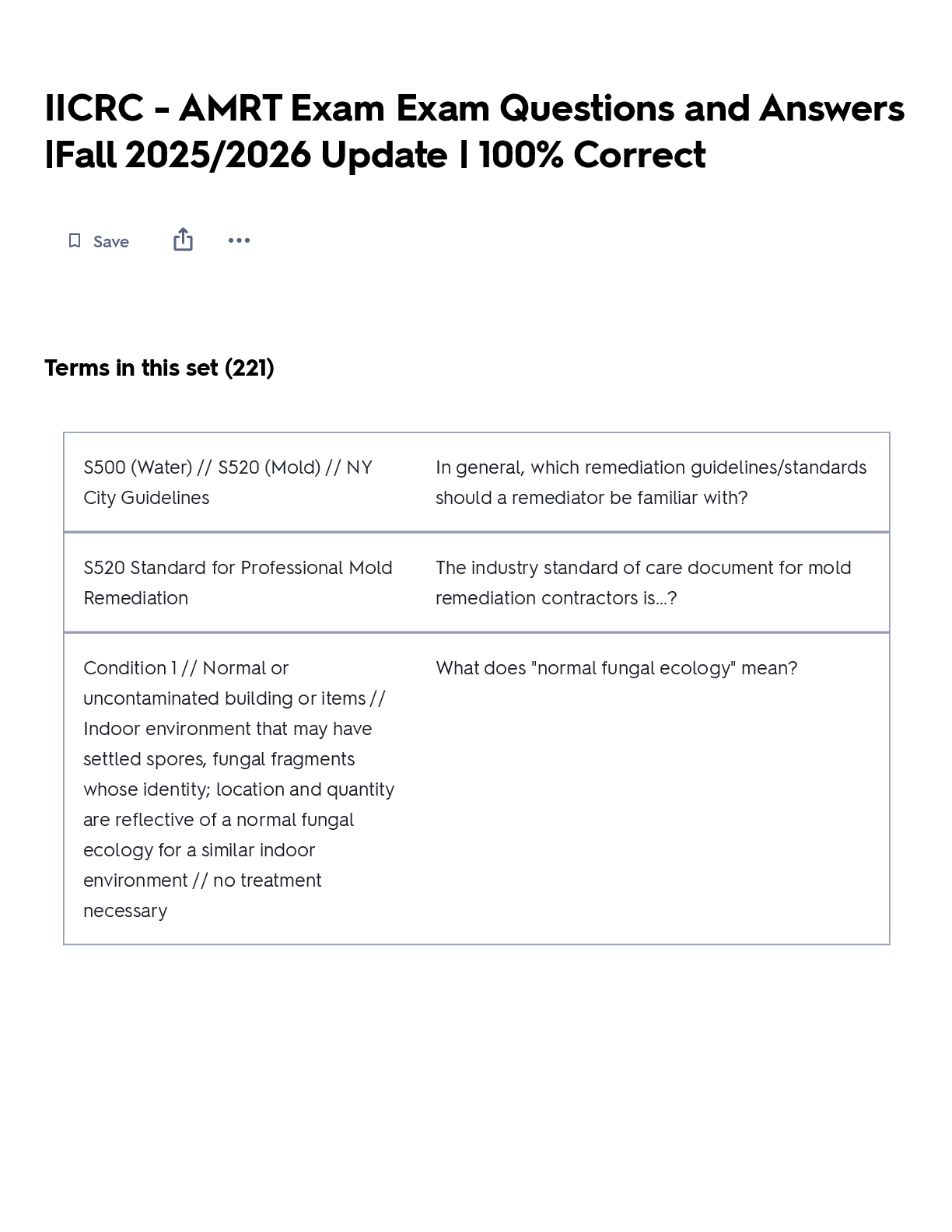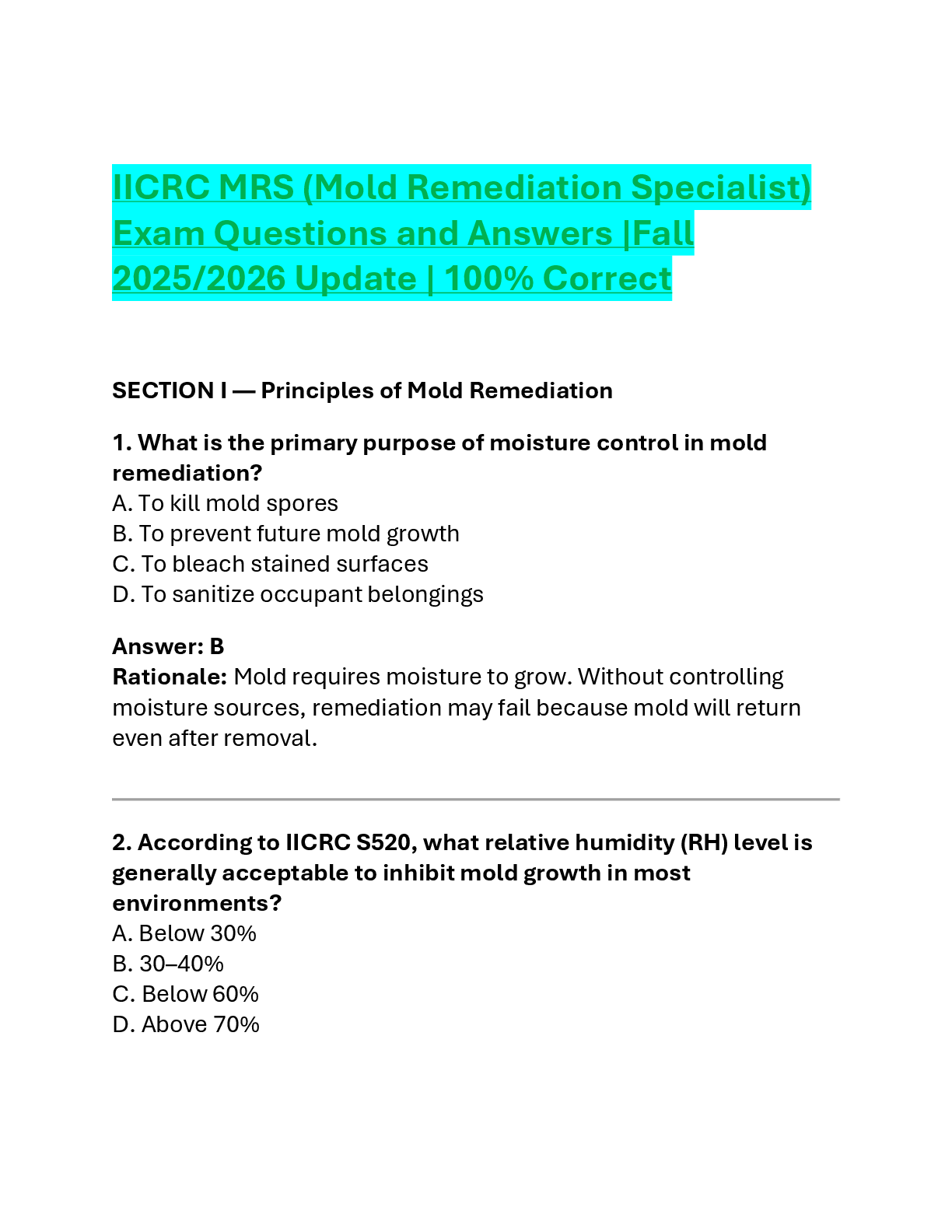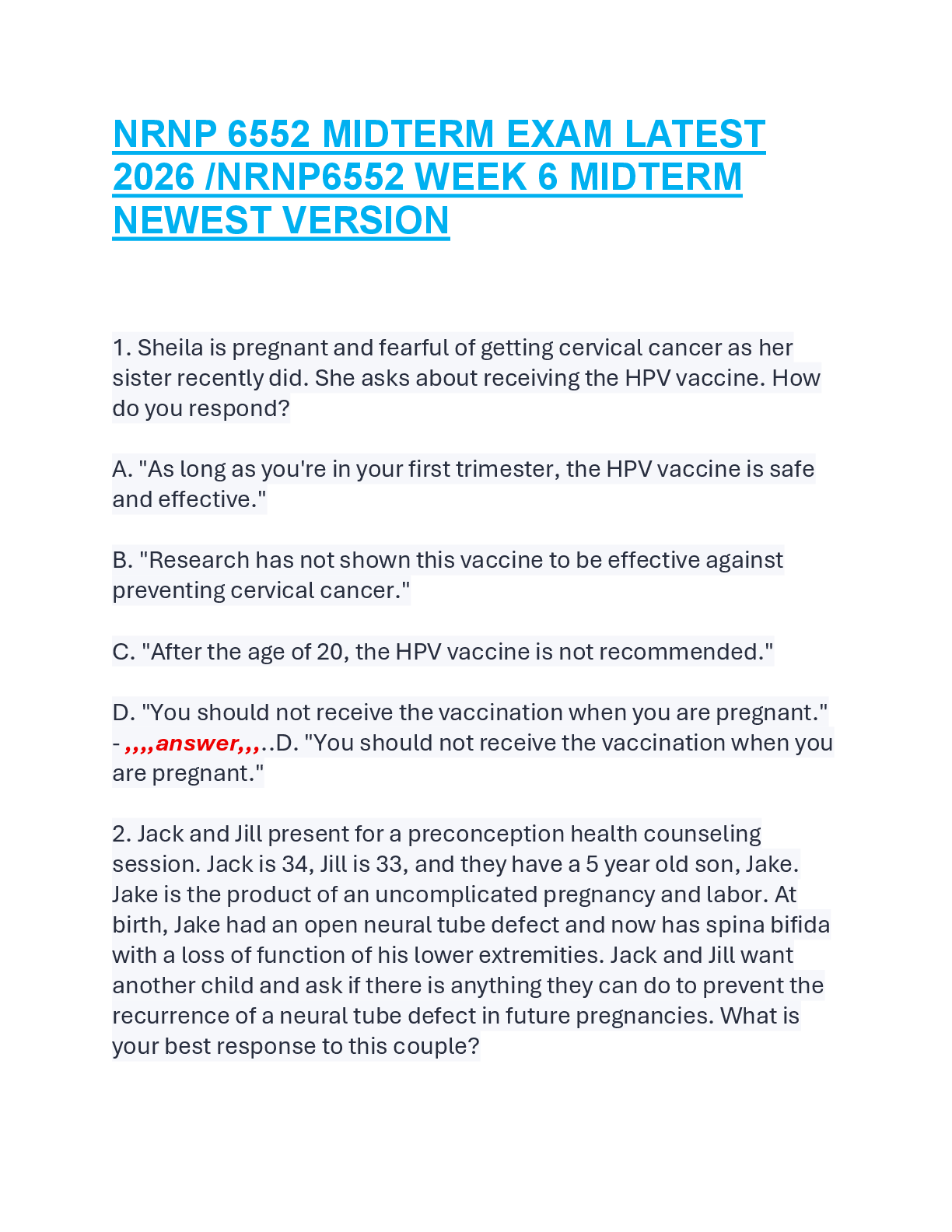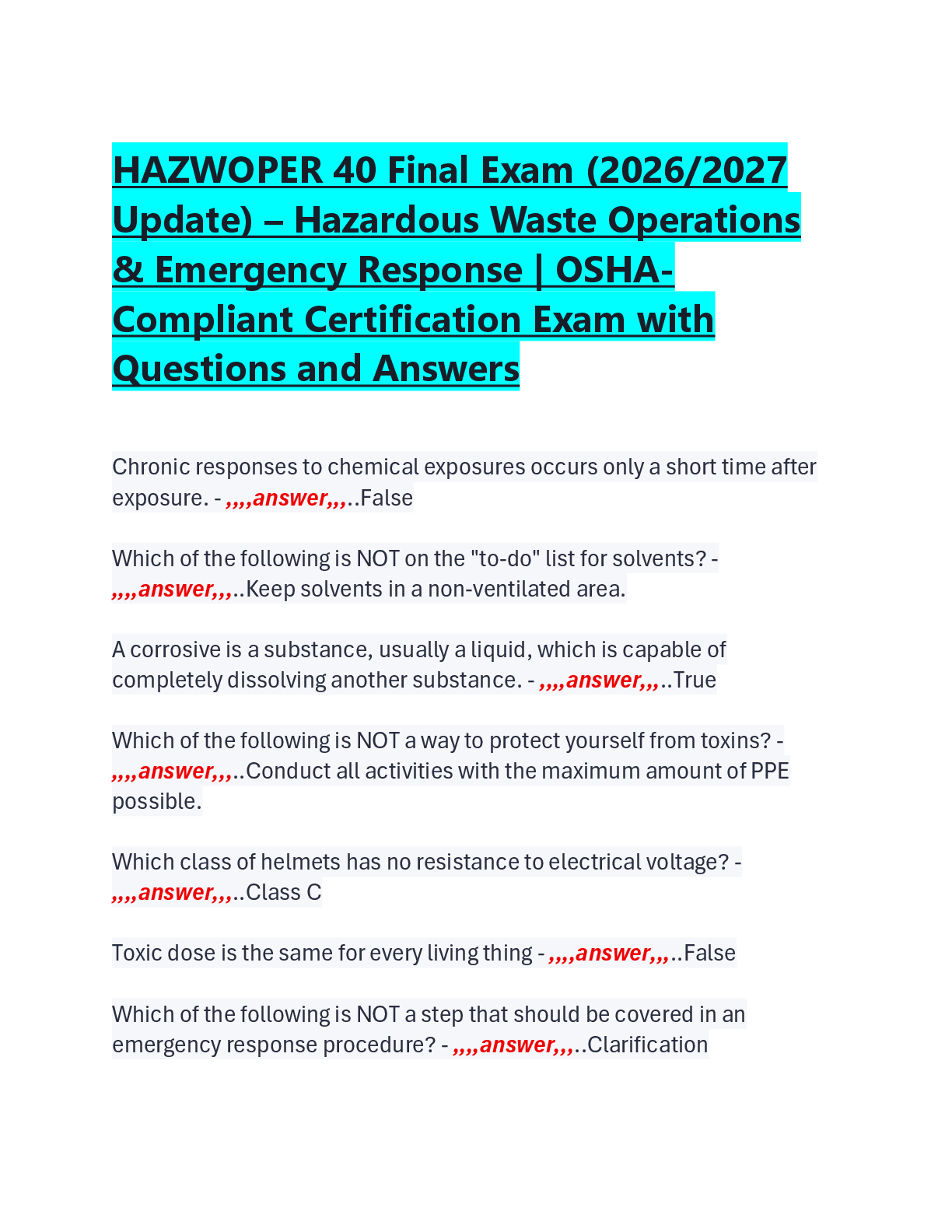NUR 209 MIDTERM EXAM WITH ANSWERS
Document Content and Description Below
NUR 209 MIDTERM EXAM WITH ANSWERS NMT: Infants and Children - ans-- salivation starts at 3 mnth of age - children have 20 temporary deciduous teeth Throat - ans-Tonsils: mass of lymphoid tis ... sue, same color as surround muscus membrane, more glandular deep crypts on surface - oral cavity and throat have rich vascular network Mouth - ans-- Hard-palate: bone whitish color - lips; transition zone - soft palate: pinker mobile arch of muscle - uvula: free projection hanging down middle soft plate - cheeks: side wall of oral cavity - tongue: mass of striated - papillae: rough bumps elevations (dorsal) - vallate papillae: inverted v-shape, posterior tongue - Frenulum: connects tongue to mouth floor - Parotid gland (stensens duct): submandibular gland (Wharton's duct), sublingual gland - secretes saliva, moistens/libricates food, starts digestion, cleans + protects mucosa Functions of Skin - ans-- Protection from mechanical, chemical, thermal damage - Barrier to invasion of microorganisms - Sensory surface- touch, temperature, pain - Regulates temp through sweating - Cell replacement for wound repair - Identification: facial features, skin/hair color, fingerprints SHN: Social Determiants - ans-- Awareness of normal bicultural differences and ability to recognize unique clinical manifestations of disease are especially important for people with dark pigmentation - related to variation in skin pigmentation and hair texture - genetic advantage to dark pigmentation accounts for lower incidence of skin cancer among those of african, indian, or aboriginal descent. - variation in sexual skin areas affected by humans - environmental adaptions affecting sweat glands - SHN: Subjective Data - ans-- change in skin pigmentation, change in mole, brusing, itching, rash, meds, hair loss, change in nails, self-care behaviours, previous history of skin disease Epidermis - ans-- rugged protective barrier - outermost layer of skin - basal cell layer: forms new skin cells, made of keratin cels, produces melanin - horny cell layer: consists of dead keratinized cells - skin is replaced every 4 weeks Skin pigment sources - ans-- Brown pigment melanin - yellow/orange pigment - red/purple tones of underlying vascular bed Dermis - ans-- consists of connective tissue or collagen - elastic tissue that allows the body to stretch with movements - nerves, sensory receptors, lymphatic vessel, hair follicles, sebaceous glands, sweat glands all lie in dermis Skin Color Change - ans-- Pallor: white, decreased hematocrit - Erythema: intensely red, increased blood flow through engorged arterioles - Cyanosis: blueish tint, increased amount of unoxygenated blood - Jaundice: yellow discoloration, indicating rising amounts of bilirubin Skin Temperature/Moisture - ans-- measure using the dorsal part of hands - warm, equal bilat - cold feet and hands are normal. - hypothermia: generalized coolness - hyperthermia: fever/infection - Diaphoresis= sweating - Dehydration= dry - SHN Normal Findings - ans-- Texture: smooth, firm, even surface - Thickness: thin except palms/soles - Edema: Normally skin resumes smoothness immediately - Mobility and Turgor: mobility is the ease of skin risking, turgor is the ability to go back into place - Brusing should be consistant with life - Lesions: color, elevation, shape/pattern, size, location, exudate - Hair is light blond to black - Hair texture is fine, thin, curly - Nails: slightly curved or flat, smooth, rounded 160, convex, uniform thickness - cap refill returns instantly Self-Examination - ans-- A: asymmetry - B: border irregularity - C: color variation - D: diameter greater than 6mm - E: evolution Hair - ans-- threads of keratin - hair shaft is visible, root is below surface - root=bulb matrix, new cells produced - Arrector pilli- goose bumps - vellus hair- fine, faint, most of body - terminal hair= coarse thick hair, eyebrows, axillae, pubic [Show More]
Last updated: 1 year ago
Preview 1 out of 18 pages
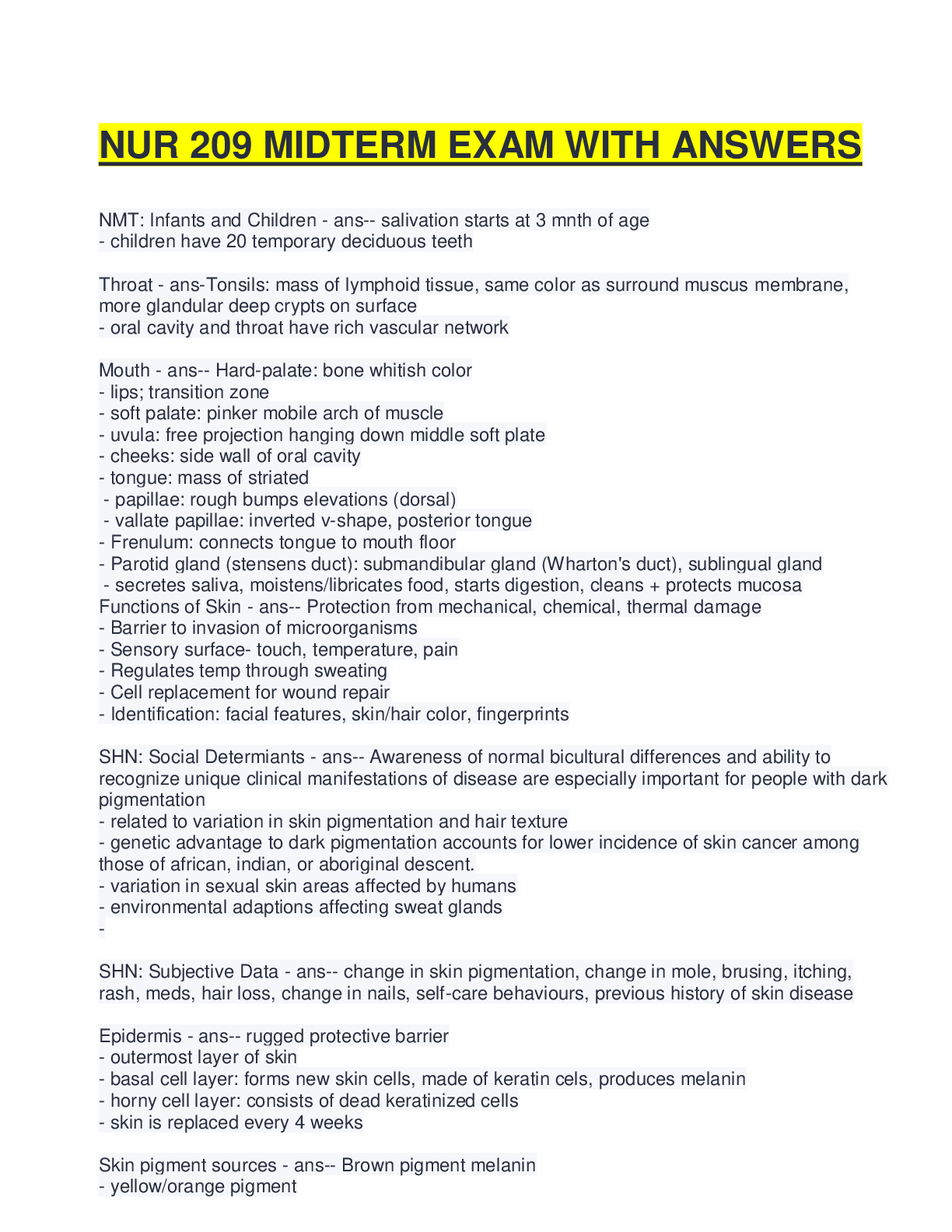
Buy this document to get the full access instantly
Instant Download Access after purchase
Buy NowInstant download
We Accept:

Reviews( 0 )
$12.00
Can't find what you want? Try our AI powered Search
Document information
Connected school, study & course
About the document
Uploaded On
Mar 14, 2024
Number of pages
18
Written in
All
Additional information
This document has been written for:
Uploaded
Mar 14, 2024
Downloads
0
Views
35

